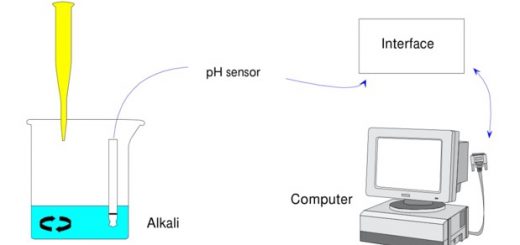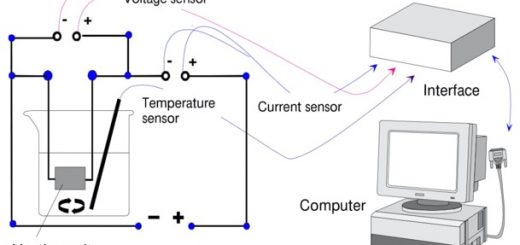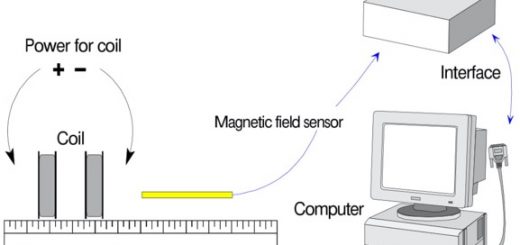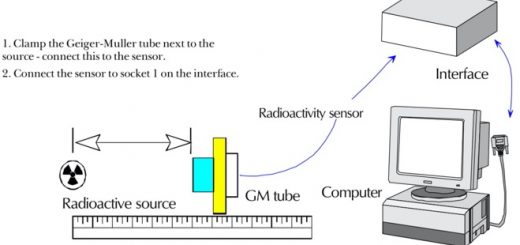the definitive collection of all the experiments that were published in Roger Frost’s manuals or used on his training sessions. The collection is fully-indexed with keywords and fully searchable by topic or the equipment used
weather station
visitors this year: 44 Weather station With a data logger several sensors can be used together to monitor the weather over periods lasting weeks. Suitable sensors include temperature, pressure, humidity, light or even a...
burning a candle
visitors this year: 92 Burning a candle As a candle burns oxygen is used and heat and water are produced. A few sensors can be used to monitor this process – including a light...
thermometric titration
visitors this year: 284 Thermometric titration As acid reacts with alkali the pH changes and heat is evolved. This heat of neutralisation can be easily monitored using sensors – to produce a graph of...
acid-base titration
visitors this year: 88 Acid-base titration As acid drains into alkali the pH changes. This can be monitored using a pH sensor to instantly produce a graph of pH against volume. The volume of...
reaction rate: marble & acid
visitors this year: 94 Rates: marble and acid Apparatus Clamps, bosses, & stands, marble pieces (large, medium and small sizes), 1M hydrochloric acid HCl, flask, bung, delivery tube, a good gas syringe. Interface, position...
reaction rate: thiosulfate & acid
visitors this year: 548 Rates: Thiosulfate and acid Sodium thiosulfate and acid react to form a precipitate. The light sensor can be used, like a colorimeter, to monitor the rate of the reaction. In...
exothermic reactions
visitors this year: 143 Exothermic reactions A temperature sensor can collect information about the heat generated when lime is mixed with water. Exothermic reactions are used in a glove heating pack. The proportions of...
heat of reaction
visitors this year: 106 Heat of reaction As acid reacts with alkali, heat is evolved. This is the heat of neutralisation. This can be easily monitored using a temperature sensor. In this experiment the...
absorption of thermal radiation
visitors this year: 85 Absorption of thermal radiation A shiny surface and a black surface absorb heat differently. Using temperature sensors or thermocouple probes it is possible to compare the temperatures on two these...
oscillator motion
visitors this year: 36 Oscillator motion A position sensor is attached to a weight and spring assembly as shown. This can be used to study simple harmonic motion and the effects of changing the...
extension of a spring
visitors this year: 73 Extension of a spring A position sensor is attached to a weight and spring assembly as shown. This can be used to graph the extension of the spring with increasing...
cooling curve
visitors this year: 138 Cooling curve Two temperature sensors can collect some interesting information about cooling during a change of state. In this experiment the temperature of a water bath increases as a substance...
heat insulation
visitors this year: 24 Heat insulation A temperature sensor can be used to study the insulating properties of different materials. Two temperature sensors allow a simultaneous comparison to be made. In this experiment two...
heat conduction
visitors this year: 39 Heat conduction A temperature sensor can be used to study the conduction of heat through different materials. Two temperature sensors allow a comparison to be made. In this experiment strips...
pressure & temperature
visitors this year: 40 Pressure & temperature How pressure changes with temperature can be monitored using sensors. A graph of pressure against temperature can be plotted as it happens. After the experiment, the scale...
capacitor charge and discharge
visitors this year: 58 Capacitor charge and discharge The voltage & current of a capacitor are measured as it charges and discharges. Sensors allow a graph to be plotted as this happens. The effect...
current and voltage
visitors this year: 74 Current-Voltage relationships In this experiment the resistance of a lamp, resistor or diode is measured as the current is varied. Voltage and current sensors make the measurements while the software...
characteristics of a thermistor
visitors this year: 74 Thermistor characteristics The voltage & current of a thermistor are measured as its temperature changes. Sensors allow graphs of voltage and current to be plotted against time. Not only can...
heating effect of an electric current
visitors this year: 42 Heating effect of an electric current The temperature, voltage & current of a heating unit are measured over a period of time. This allows us to calculate the power of...
battery life
visitors this year: 36 Battery life In this experiment an electrical cell is tested to exhaustion. The cell might be a dry-cell, an alkaline cell or a lead-acid accumulator. The decreasing voltage is measured...
seismometer
visitors this year: 77 Seismometer The magnetic field sensor responds to magnetic fields. We can use this idea, together with a metre rule damped with a sand bag, to demonstrate how a seismometer might...
magnetic fields
visitors this year: 39 Magnetic fields The magnetic field sensor responds to a magnetic field. In this experiment the sensor is moved through Helmholtz coils and the variation in field is measured. Apparatus Clamp...
radioactivity decay & penetration
visitors this year: 65 Radioactive decay The radioactivity sensor is normally connected to a standard Geiger-Muller tube and can produce a radioactive decay curve in ‘real-time’. This is a very convincing display of radioactive...
oxygen solubility and temperature
visitors this year: 201 As the temperature of water increases, the solubility of oxygen decreases. This is significant in pollution studies – for example, when factory outflow warms a river. In this experiment a...
measuring plant growth – long experiment
visitors this year: 91 A position sensor can be attached to a plant to record its growth. Depending on the plant chosen this is a very slow process. Using a sensor greatly decreases the...
osmosis
visitors this year: 42 A pressure sensor can be used to monitor the progress of osmosis. In this experiment a dialysis bag containing sucrose solution is placed in a beaker of water. Over a...
energy in food
As food burns it releases energy. This energy can be used to heat up a known volume of water and so calculate its energy content. The temperature change can be easily monitored using a temperature sensor. Furthermore, if the food stops burning too soon, the graph will show how much the water cools and you can add this temperature change into your calculations.
respiration; germination; fermentation; anaerobic & aerobic
When living things respire they use up oxygen. This can be monitored using an oxygen sensor. The living thing can be a plant, animal or microorganism. Maggots, locusts, or yeast are often used and so can pond-weed. If you use Elodea, its container should be kept in the dark or wrapped in foil.
It is also quite easy to show how temperature affects the rate of respiration
– however, in this example, the oxygen sensor should be able to compensate for its own response to temperature changes.
photosynthesis – measure oxygen or pH
Sensors can be used to monitor photosynthesis. They can show that as the light level increases, the oxygen level will also increase. It is also possible to show the effect of carbon dioxide levels (as added hydrogen carbonate solution) and to show the effect of coloured light.
enzymes: starch & amylase; pepsin & protein
Two experiments: in one amylase catalyses the hydrolysis of starch. Iodine can be used as an indicator to show that the starch has been broken down. A light sensor can be used, like a colorimeter, to monitor this change.
Another experiment aims to show the effect of different temperatures on the action of amylase.This experiment studies
the effect of the enzyme pepsin on protein. Pepsin catalyses the hydrolysis of the protein, albumin into amino acids. As the protein solution is cloudy and amino acids are soluble the liquid changes from cloudy to clear. The light sensor can be used, like a colorimeter, to monitor this change.
temperature sensor
visitors this year: 84 Sensors to measure heat and temperature These sensors are available in all flavours to suit different applications. You should be able to decide on the type that suits whole class...
a data logger is a scientist’s camera
visitors this year: 64 data loggers – the scientist’s camera! There is a rich world of data waiting to be collected. Take an accelerometer with you on a theme park roller coaster or if...














































